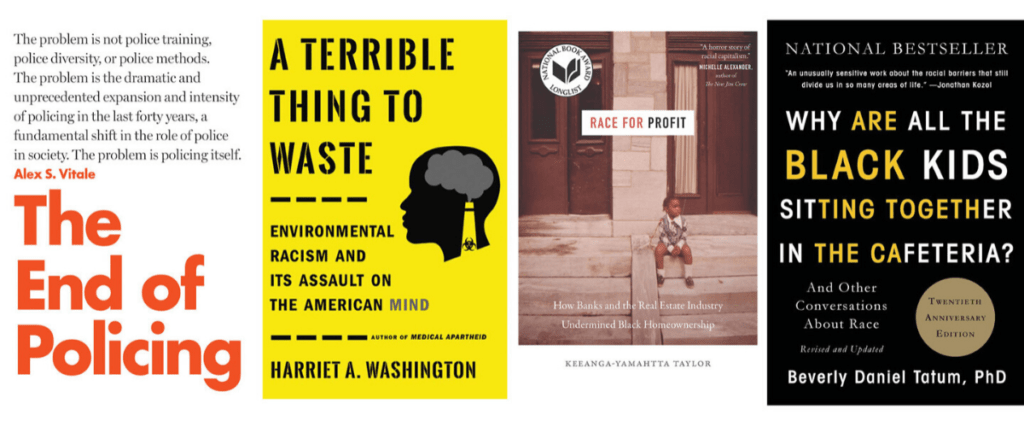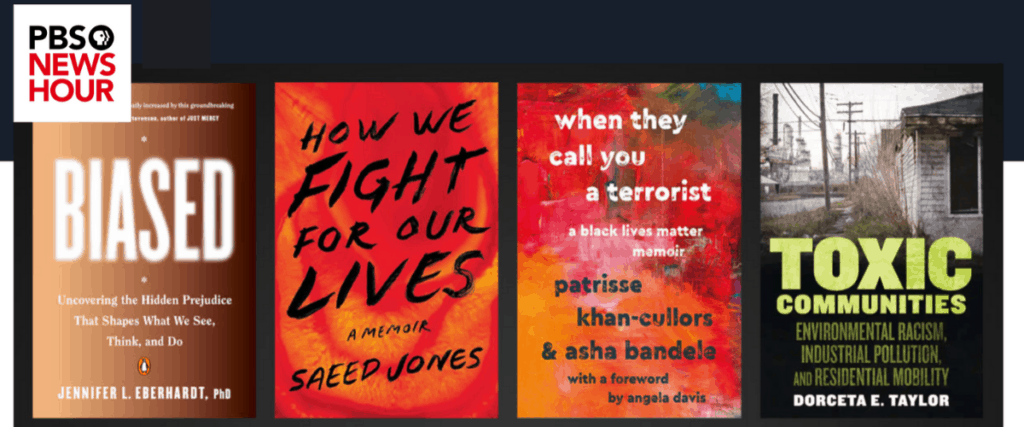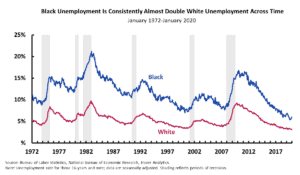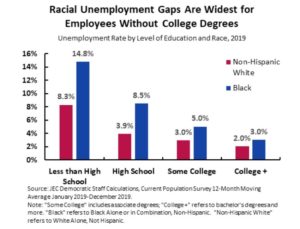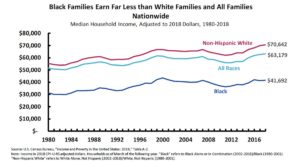THE PATHWAYS FORWARD
A place for those who wish to solve the issue of Systemic Racism.
Getting Into Action
The number of resources available is voluminous. That said, what I will provide here are specific recommendations to those I have personally seen, discussed with others, and thus can recommend, along with links to curated lists from other credible sources.
PETITIONS, ONLINE ACTIONS, IN-PERSON EVENTS
 JOIN ACTIVE PETITIONS OR CREATE NEW ONES / TAKE ONLINE ACTIONS/ PARTICIPATE AT IN-PERSON EVENTS
JOIN ACTIVE PETITIONS OR CREATE NEW ONES / TAKE ONLINE ACTIONS/ PARTICIPATE AT IN-PERSON EVENTSColor of Change is a progressive nonprofit civil rights advocacy organization in the United States. It was formed in 2005 in the aftermath of Hurricane Katrina in order to use online resources to strengthen the political voice of African Americans. It was founded by James Rucker and Van Jones.
Their Mission: "Color Of Change is the nation's largest online racial justice organization.
We help people respond effectively to injustice in the world around us. As a national online force driven by 1.7 million members, we move decision-makers in corporations and government to create a more human and less hostile world for Black people in America."
TIPS FOR YOUR BUSINESS
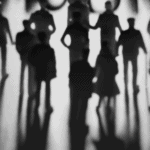 ARTICLE: U.S. BUSINESSES MUST TAKE MEANINGFUL ACTION AGAINST RACISM
ARTICLE: U.S. BUSINESSES MUST TAKE MEANINGFUL ACTION AGAINST RACISMPublished in the Harvard Business Review by Laura Morgan Roberts and Ella F. Washington, this is one of the most insightful, research-backed articles that I have seen. The article provides relevant context, psychological reflections, along with a summary for businesses in terms of three common missteps to avoid and three things to do in order to take action.
BEGIN YOUR ECONOMIC JOURNEY
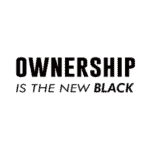
WE OWN NOWLaunched by Derek Minor, this site provides insights into basic money practices from debt reduction, to savings to investing.
Getting Educated
The number of resources available is voluminous. That said, what I will provide here are specific recommendations to those I have personally seen, discussed with others, and thus can recommend, along with links to curated lists from other credible sources.
FILMS AND DOCUMENTARIES
For those that Love Charts and Graphs
This page will act as a hub, providing easy access to information to deepen understanding and contribute to change.
It is a work in progress and will be updated regularly. Join our email list to receive updates here. Thank you, James (Trig)
The Issues Summarized
There is no lack of resources that outline the issues that comprise systemic racism. In our research, we have found that in large part, those issues roll-up into the themes of: Criminal Justice, Economic, Health, Voting, and Education. Below you will more detail in regards to each of those themes as well as how to get connected to action.
Racism in the U.S. Criminal Justice System
A lot has both changed and stayed the same for the black community of America. Decades after the Civil Rights Movement of the 1960s, many African Americans still face glaring racial discrimination. Perhaps the most dangerous aspect of society for black Americans comes in the form of the U.S. criminal justice system.
The U.S. currently has the highest incarceration rate in the world. In 2015, it had imprisoned 6.7 million individuals in both correctional facilities and prisons. Over 30% of this population was estimated to comprise of African Americans. Black communities are seven times more likely to be arrested than white people. In 1991, a report by the New York State Judicial Commission on Minorities showed that black people were subject to racism from both the police and judiciary systems that included varying levels of physical harassment and unequal treatment in court compared to white offenders.
One of the many examples of racial discrimination in the U.S. criminal justice system is the Scottsboro case of 1931. The Alabama police had arrested nine African American youths for rape charges made against them by two white women. Despite the alleged victims admitting their accusations were in fact false, the youths were still deemed guilty in court by an all-white jury.
Criminal justice disparity has affected black Americans more than any other racial minority. A study by the Bureau of Justice Statistics shows that 32 percent of the country's black men are likely to spend their entire lives in prison compared to only 6 percent of white men. The threat of incarceration has become a daily reality for African American men. A study of drug-related arrests in Seattle has shown that 64 percent of arrests constitute black smugglers, while white operations often fall under the radar.
Even black families far removed from racially profiled stereotypes have been targeted. In 2019 in Phoenix, Arizona, Dravon Ames, and his pregnant fiancée Iesha Harper were harassed and nearly arrested by two officers after their 4-year-old daughter took a Barbie doll out of a store without their knowing. The police report falsely claimed that the couple had shoplifted other items and were verbally abusive. Both officers were dismissed but not charged.
Since the 1960s, legal safeguards have been put into place to protect African Americans from unjust judicial treatment. However, further legislation since then, such as the 1994 Crime Bill, have allowed cops to take more punitive action against offenders, often at the expense of underprivileged black communities.
References:
Banks, C. (2009). Racial Discrimination in the Justice System, "Criminal Justice Ethics (Edition 2)" (pp 65-85). SAGE Publications, Inc.: California. Retrieved from: https://www.sagepub.com/sites/default/files/upm-binaries/46946_CH_3.pdf
"Civil Rights Movement." (2009). History.com. https://www.history.com/topics/black-history/civil-rights-movement#section_9
Cobb, J. (2020). "The Death of George Floyd, In Context". The New Yorker. https://www.newyorker.com/news/daily-comment/the-death-of-george-floyd-in-context
Criminal Justice Fact Sheet. NAACP. https://www.naacp.org/criminal-justice-fact-sheet/
Jackson, D. (2019). "Trump defends response to Charlottesville violence, says he put it 'perfectly' with 'both sides' remark". USA Today. https://www.usatoday.com/story/news/politics/2019/04/26/trump-says-both-sides-charlottesville-remark-said-perfectly/3586024002/
Lussenhop, J. (2016). "Clinton crime bill: Why is it so controversial?" BBC News. https://www.bbc.com/news/world-us-canada-36020717
Moshtaghian, A. & Waldrop, T. (2019). "Phoenix couple who say police drew guns on them want officers fired." CNN International. https://edition.cnn.com/2019/06/17/us/phoenix-couple-want-officers-fired/index.html
Report to the United Nations on Racial Disparities in the U.S. Criminal Justice System. (2018). The Sentencing Project. https://www.sentencingproject.org/publications/un-report-on-racial-disparities/
"Scottsboro Boys." (2018). History.com. https://www.history.com/topics/great-depression/scottsboro-boys
In 1951, Oliver Brown filed a lawsuit against the Board of Education of Topeka, Kansas, after his daughter Linda Brown was prohibited from enrolling in an all-white elementary school. Educational facilities for African Americans at the time were still largely inferior to those that catered to white students, and Brown argued that this violated the constitutional rights of black children around the country. Three years later, the verdict for Brown v. Board of Education of Topeka was to outlaw racial segregation in schools in a landmark move for the Civil Rights movement.
The years after the ruling remained turbulent for African American students. Many states in the South still barred black youths from enrolling in newly desegregated schools. In 1957, in a high school in Little Rock, Arkansas, nine black teenagers braved an irate mob of white protestors as they attempted to go to school for the start of term. They were able to successfully enter the school on their second try under the protection of an escort from the US Army, as the hostile crowd hurled violent racial epithets at them. The nine were thereafter referred to as the Little Rock Nine.
In 1960, six-year-old Ruby Bridges faced similar scathing odds on her first day of school at a kindergarten in New Orleans. She passed a special entrance exam that tested the academic aptitude of black children compared to their white peers. Despite trepidation from both her parents, it was Ruby's mother that insisted on pushing through with her enrollment, insisting that her child receive the same educational opportunities afforded to white children. On November 14, Ruby became the first student to integrate a school in the volatile South. In a scene similar to that faced by the Little Rock Nine, she walked up to school guarded by a police escort as a furious mob yelled and jeered at her and her mother. Many white parents would go on to take their children out of the school in protest, and Ruby was left as the only student in her class with only one teacher willing to teach her.
Racial disparities in the education system continue to be one of the most significant social factors impacting African Americans. A study by the National Center for Education Statistics in 2014 showed that black students still lag behind their white schoolmates when it comes to high school graduation rates. Black students were also less likely to be recommended for accelerated and gifted education programs and are notably more likely to be penalized or even expelled. This disproportionate treatment can be largely attributed to implicit biases from teachers. Studies have showed that white teachers are more given to stereotyping black students as troublemakers and at worst, potential criminal offenders. Black teachers, on the other hand, are more likely to act positively toward these students.
Another major influencing factor that impacts equity in the education system is financial status. Black students are more likely to come from underprivileged communities and are thus less likely to receive the kind of education wealthier families do. To date, public funding for top school facilities is concentrated in well-off, primarily white districts. By comparison, neighborhoods with communities of color receive $23 billion less in funding annually. Students of color thus have a greater chance of attending schools that have inferior facilities, resources, and overall quality of education.
The current political situation in America as well as the multiple school shootings in the previous years have created a climate of unrest and dread for black students. A study in 2018 showed that although black students comprise an estimated 16% of the American student population, they experience school shootings at almost twice that rate. An increase in police presence in schools has left many black students feeling unsafe due to the growing cases of racially motivated police brutality that has failed to spare even the youngest of students.
References:
Brown v. Board of Education (2009). History.com. Retrieved from: https://www.history.com/topics/black-history/brown-v-board-of-education-of-topeka
Chatterji, R. (2020). Fighting Systemic Racism in K-12 Education: Helping Allies Move From the Keyboard to the School Board. Center for American Progress. Retrieved from: https://www.americanprogress.org/issues/education-k-12/news/2020/07/08/487386/fighting-systemic-racism-k-12-education-helping-allies-move-keyboard-school-board/
Cox, J. & Rich, S. (2018). How many children are affected by school gun violence in America? The Washington Post. Retrieved from: https://www.washingtonpost.com/graphics/2018/local/us-school-shootings-history/
Halsell, B. (2019). Ruby Bridges First Day of School Changed History. Los Angeles Sentinel. Retrieved from: https://lasentinel.net/ruby-bridges-first-day-of-school-changed-history.html
Smith, D. (2017). Little Rock Nine: the day young students shattered racial segregation. The Guardian. Retrieved from: https://www.theguardian.com/world/2017/sep/24/little-rock-arkansas-school-segregation-racism
Weir, K. (2016). Inequality at school. American Psychological Association. Retrieved from: https://www.apa.org/monitor/2016/11/cover-inequality-school
A lot has both changed and stayed the same for the black community of America. Decades after the Civil Rights Movement of the 1960s, many African Americans still face glaring racial discrimination. Perhaps the most dangerous aspect of society for black Americans comes in the form of the U.S. criminal justice system.
The U.S. currently has the highest incarceration rate in the world. In 2015, it had imprisoned 6.7 million individuals in both correctional facilities and prisons. Over 30% of this population was estimated to comprise of African Americans. Black communities are seven times more likely to be arrested than white people. In 1991, a report by the New York State Judicial Commission on Minorities showed that black people were subject to racism from both the police and judiciary systems that included varying levels of physical harassment and unequal treatment in court compared to white offenders.
One of the many examples of racial discrimination in the U.S. criminal justice system is the Scottsboro case of 1931. The Alabama police had arrested nine African American youths for rape charges made against them by two white women. Despite the alleged victims admitting their accusations were in fact false, the youths were still deemed guilty in court by an all-white jury.
Criminal justice disparity has affected black Americans more than any other racial minority. A study by the Bureau of Justice Statistics shows that 32 percent of the country's black men are likely to spend their entire lives in prison compared to only 6 percent of white men. The threat of incarceration has become a daily reality for African American men. A study of drug-related arrests in Seattle has shown that 64 percent of arrests constitute black smugglers, while white operations often fall under the radar.
Even black families far removed from racially profiled stereotypes have been targeted. In 2019 in Phoenix, Arizona, Dravon Ames and his pregnant fiancée Iesha Harper were harassed and nearly arrested by two officers after their 4-year-old daughter took a Barbie doll out of a store without their knowing. The police report falsely claimed that the couple had shoplifted other items and were verbally abusive. Both officers were dismissed but not charged.
Since the 1960s, legal safeguards have been put into place to protect African Americans from unjust judicial treatment. However, further legislation since then, such as the 1994 Crime Bill, have allowed cops to take more punitive action against offenders, often at the expense of underprivileged black communities. Racism in the United States has become more widespread under the Trump Administration, with President Trump himself motivating white supremacist sentiments.
With the Black Lives Matter movement in the U.S. reaching its peak after the murder of George Floyd by a police officer, public outcry is focusing on reform of the criminal justice system. Protests around the country call for penalizing law enforcement involved in the unjust murders of countless black Americans and eradicating a national police force that has backed police brutality with overt racism.
References:
Banks, C. (2009). Racial Discrimination in the Justice System, "Criminal Justice Ethics (Edition 2)" (pp 65-85). SAGE Publications, Inc.: California. Retrieved from: https://www.sagepub.com/sites/default/files/upm-binaries/46946_CH_3.pdf
"Civil Rights Movement." (2009). History.com. https://www.history.com/topics/black-history/civil-rights-movement#section_9
Cobb, J. (2020). "The Death of George Floyd, In Context". The New Yorker. https://www.newyorker.com/news/daily-comment/the-death-of-george-floyd-in-context
Criminal Justice Fact Sheet. NAACP. https://www.naacp.org/criminal-justice-fact-sheet/
Jackson, D. (2019). "Trump defends response to Charlottesville violence, says he put it 'perfectly' with 'both sides' remark". USA Today. https://www.usatoday.com/story/news/politics/2019/04/26/trump-says-both-sides-charlottesville-remark-said-perfectly/3586024002/
Lussenhop, J. (2016). "Clinton crime bill: Why is it so controversial?" BBC News. https://www.bbc.com/news/world-us-canada-36020717
Moshtaghian, A. & Waldrop, T. (2019). "Phoenix couple who say police drew guns on them want officers fired." CNN International. https://edition.cnn.com/2019/06/17/us/phoenix-couple-want-officers-fired/index.html
Report to the United Nations on Racial Disparities in the U.S. Criminal Justice System. (2018). The Sentencing Project. https://www.sentencingproject.org/publications/un-report-on-racial-disparities/
"Scottsboro Boys." (2018). History.com. https://www.history.com/topics/great-depression/scottsboro-boys
For centuries, Black people in America have had to deal with a healthcare system that has been largely motivated by racial discrimination. Apart from dealing with sparse employment opportunities compared to White people, African Americans also have to cope with unequal access to healthcare services, insurance coverage gaps, and even abuse in hospitals and other medical institutions. This unequal treatment means that during periods like pandemics, the Black community of America is especially vulnerable.
African Americans have had a long history of being denied healthcare as a basic humanitarian right. During the pre-Civil War era, Black people were denied necessary medical treatment by their masters, all the while having to endure abusive treatment while working for them. It was also common for European-American medical practitioners to use African American slaves for a wide variety of unethical medical experiments. The bodies of slaves were also often stolen straight from their graves to be used as anatomical models for medical institutions.
Progress in leveling out the healthcare disparity was attained toward the end of the Civil Rights Movement in the 60s. The Hill-Burton Act was a landmark law for the U.S. healthcare system signed by President Truman in 1964 that saw strides being taken to end segregation in hospitals and healthcare facilities. The Act allowed for the construction of hospitals in vulnerable communities, where Black people, in particular, would be concentrated. Construction abided by the "separate but equal" rule, wherein separate facilities for Whites and Blacks were built, as long as they were held to equal standards in terms of quality infrastructure and services provided.
The passing of the Affordable Care Act in 2010 by the Obama Administration sought to further mitigate healthcare inequality among racial and underprivileged minorities. The main goals of the ACA were to make health insurance more affordable for all types of households, increase the reach of Medicaid, and support initiatives that help lower healthcare expenses. While the Act has helped low-income African American communities around the country, it still disproportionately benefits White Americans. Among the estimated 20 million citizens the Act has provided insurance for, only 2.8 million are African American. Moreover, an estimated 14 states, concentrated in the South, have opposed the extension of Medicaid.
One of the most infamous examples of healthcare abuse of Black people is the Tuskegee syphilis study, a 40-year medical experiment that started in 1932. The study, also known as the Tuskegee Study of Untreated Syphilis in the Negro Male, collected 600 African American sharecroppers who were falsely informed that they were being treated for general illnesses. Half of the men had latent syphilis while the other half were a control group for the White health workers. Over the course of 40 years, they tracked the progression of the disease, only giving the participants placebos despite the availability of penicillin at the time. By the time the true nature of the study had been leaked to the public in 1970, 128 participants had died from both syphilis and complications, while the disease had been passed on to 40 spouses and 19 children.
African American LGBT people are one of the most vulnerable demographics when it comes to healthcare-related mistreatment. One of the most egregious examples of this is the case of Tyra Hunter. In 1995, Hunter, a transgender Black woman, was seriously injured in a car crash in Washington, DC. Upon learning of her transgender orientation, both the EMTs and hospital staff refused to give her adequate care and instead hurled racist and transphobic slurs at her. Hunter passed away at the hospital having been denied proper treatment.
Despite the strides in recent years towards a more equitable healthcare system, the COVID-19 pandemic has underlined the yet systematically flawed healthcare system of America in relation to its treatment of Black people. To date, Black Americans are five times more likely to be hospitalized for the virus than White people. Adding to the burden of hospitalization are the financial burdens on poorer patients not covered by Medicaid or other healthcare programs. Black people are also more likely to have to deal with substandard and densely populated housing conditions, making them at high risk for contracting the virus. The response to the pandemic coupled with the Black Lives Matter movement has shone a harsh light on the work that still needs to be done to eradicate racial disparities in American healthcare.
References:
Affordable Care Act (ACA). HealthCare.gov. Retrieved from: https://www.healthcare.gov/glossary/affordable-care-act/
COVID-19 in Racial and Ethnic Minority Groups. (2010). Centers for Disease Control and Prevention. Retrieved from: https://www.cdc.gov/coronavirus/2019-ncov/need-extra-precautions/racial-ethnic-minorities.html
Dr. Jangi, S. (2016). Medicine has a long history of failing black people. Let's change that. Boston Globe. Retrieved from: https://www.bostonglobe.com/magazine/2016/11/02/medicine-has-long-history-failing-black-people-let-change-that/JQTDySyqeOOjcgHlEG2FMM/story.html
Fauci, C. (2010). Racism and Health Care in merica: Legal Responses to Racial Disparities in the Allocation of Kidneys. Boston College. Retrieved from: https://www.bc.edu/content/dam/files/schools/law/lawreviews/journals/bctwj/21_1/02_TXT.htm
Frothingham, S. (2015). Twenty Years After Tyra Hunter's Death, LGBT People Are Still Waiting for Basic Protections. Generation Progress. Retrieved from: https://genprogress.org/on-20th-anniversary-of-tyra-hunters-death-lgbt-people-are-still-waiting-for-basic-protections/
Nix, E. (2017). Tuskegee Experiment: The Infamous Syphilis Study. History.com. Retrieved from: https://www.history.com/news/the-infamous-40-year-tuskegee-study
Schumann, J. (2016). A Bygone Era: When Bipartisanship Led To Health Care Transformation. National Public Radio. Retrieved from: https://www.npr.org/sections/health-shots/2016/10/02/495775518/a-bygone-era-when-bipartisanship-led-to-health-care-transformation#:~:text=Live%20Sessions-,Hill%2DBurton%20Act%3A%20A%20Health%20Care%20Milestone%20Worth%20Remembering%20%3A,have%20left%20a%20lasting%20legacy.
Taylor, J. (2019). Racism, Inequality, and Health Care for African Americans. The Century Foundation. Retrieved from: https://tcf.org/content/report/racism-inequality-health-care-african-americans/
Years after the end of the Civil War, African Americans were still fighting to have their democratic rights represented in the country's electoral system. Despite the ending of slavery and the passing of the 14th and 15th Amendments, which officially granted former slaves civil rights as lawful citizens, many states continued to try and suppress the voters' rights of Black communities.
The first official legislation passed by Congress to protect African American's voting rights was called the Enforcement Act, passed from 1870 to 1871. It consisted of three constituent laws - the Enforcement Act of 1870, the Enforcement Act of 1871, and the Ku Klux Klan Act. The law targeted organizations like the Ku Klux Klan that sought to terrorize and violate the rights of African Americans. It also required that the President relay to Congress any incidents of violence against Blacks that were committed and that the Senate openly investigate cases of racially-motivated violence.
Despite this law, many states still found ways to continue to deny African American suffrage. Prior to the Civil War, Oregon specifically disenfranchised Black Americans and other people of color. Its local government did not officially recognize the 15th Amendment until 1959. Explicit racial discrimination continued to plague the South, as many states in the region attempted to enact laws that compromised the rights Black people had already been given by Congress. They took advantage of both the economic and educational discrepancy between the Black and White communities by requiring voters to either pay a fee or undergo challenging literacy tests, which many Black voters could not pass and were thus denied the right to vote. Furthermore, many White people were exempted from taking such tests through grandfather clauses, which stated that citizens who were eligible voters before the ratification of the 15th Amendment were freely granted suffrage, along with their ancestors. These clauses explicitly singled out African Americans, none of whom were allowed to vote before the amendment was passed.
One of the biggest laws to emerge from the Civil Rights movement was the Voting Rights Act of 1965. The law, signed by President Lyndon B. Johnson, outlawed discriminatory measures like literacy tests and the imposition of poll taxes, leveling the field for both Black and White voters alike. And while following its ratification, many Southern states were still noticeably negligent when it came to its enforcement, Black voter turnout still saw an increase in the ensuing years. Prior to the Civil Rights movement in Mississippi, only less than 1% of Black citizens were able to register. By 1969, that amount had increased to 59%.
Today, there are still many factors that continue to undermine the rights of African Americans to vote. The majority of states prohibit former felons from voting, and socioeconomic discrepancies often result in potential Black voters being affected by this the most. 1 in 13 Black Americans are estimated to have been disenfranchised because of a felony conviction. Some states also practice voter purging, often targeting Black and Latino American voters. Other factors, like voter wait time and stringent voter ID laws have made it exceedingly difficult for Black Americans to register. Given the political climate in America surrounding the 2020 presidential elections, the need to remove the barriers to securing Black voters' rights has become more essential than ever, as the race hinges heavily on the Black vote.
References:
Brooker, Russell. (n.d.) Voting Rights for Blacks and Poor Whites in the Jim Crow South. America's Black Holocaust Museum. Retrieved from: https://www.abhmuseum.org/voting-rights-for-blacks-and-poor-whites-in-the-jim-crow-south/
Castro, A., Maxwell, C., & Solomon, D. (2019). Systematic Inequality and American Democracy. Center for American Progress. Retrieved from: https://www.americanprogress.org/issues/race/reports/2019/08/07/473003/systematic-inequality-american-democracy/
Jackson, C. (June, 2020). Black Voters Continue to Face Voter Suppression 155 Years After Juneteenth. PR Watch. Retrieved from: https://www.prwatch.org/news/2020/06/13591/black-voters-continue-face-voter-suppression-155-years-after-juneteenth
Race and Voting in the Segregated South. Constitutional Rights Foundation. Retrieved from: https://www.crf-usa.org/black-history-month/race-and-voting-in-the-segregated-south
Voting Rights Act of 1965. History.com. Retrieved from: https://www.history.com/topics/black-history/voting-rights-act
Wright, K. (2019). The Enforcement Act of 1870 (1870-1871). Black Past. Retrieved from: https://www.blackpast.org/african-american-history/the-enforcement-act-of-1870-1870-1871/

